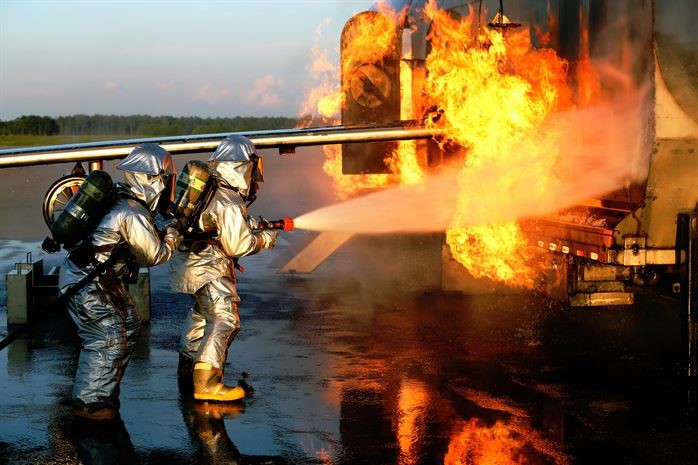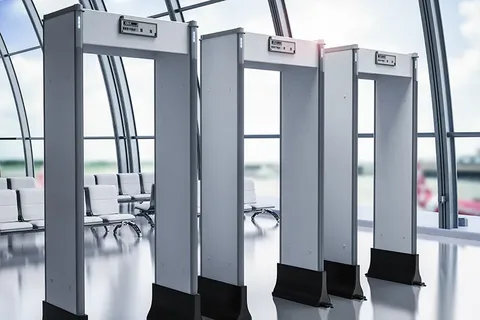
Fire hazard is a very unpredictable disaster that can hit almost every place in the world. It can start from something as small as a cigarette and light up a whole building within no time. It can damage property, cause server injuries, and sometimes cause lives.
Now, the fire extinguisher can help to minimize the risk or at least contain the fire while the professionals arrive. However, there are multiple types of fires, and using the wrong kind of extinguisher can actually do you more harm than good. So, you have to choose and use an optimal type of fire extinguisher according to the class of fire you are facing.
This article will focus on all these aspects of fire safety. It will walk you through the various type of fires and the fire extinguisher that can control them.
Types of Fire
The fire hugely depends on three factors, fuel, igniter, and air. Although the air remains a common factor of all the fires, the types of fuels and igniters can differ. The flames can start due to increased temperature of a liquid, short circuit, leaking gases, and a lot more.
Based on the fuel and the source of temperature, there are five main categories of fire. Have a look
Class A Fires: It involves the fires which use solid fuels like wood paper or textiles as a fuel source.
Class B Fires: these are the fires that thrive on flammable liquids like petrol, diesel, petroleum greases or crude oil come under this category.
Class C Fires: Fires which start and thrive due to chemical chain reactions like dry chemicals or halons comes under class c.
Class D Fires: These are the fires which involve combustible metals like magnesium, titanium, zirconium and more.
Class F Fires: The fires of this class are also known as Class K fires in some countries. These are the fires which start due to cooking oil and fats.
Apart from the five main classes of fire, there is also the sixth class, class E. It is not classified as the primary fire class because there is nothing much special about it. The fire starts due to electric sources like overheated wires or short circuit and any of the non-water extinguishers can stop it.
Types of Fire Extinguishers
As the sources of fire differentiate, the compounds that can contain them will also differ. Some fires will need dry extinguishers while the other will need liquid based extinguishers.
The different types of extinguisher that you can consider for fire evacuation plan Melbourne are:
Aqua Extinguishers
The aqua extinguishers are the simplest and the oldest type of fire extinguishers for class A fires. They have a red label and works with water. The extinguisher uses streams of water to prevent the fuel from igniting. It forms a layer on the fuel which brings down its temperature and hence stops the fire.
However, you should take special care that there is no electric wire or equipment near the area of the fire. It is conductive, which makes it vulnerable to shocks and short circuits.
Foam Extinguishers
Foam type extinguishers have a cream label and help you to deal with both class A and B type fires. They work the same way as the water extinguisher, but they spray foam instead of water. The foam makes it lighter than the liquid fuels and forms a layer on them.
This layer seals the surface of the fuel, cuts its O2 supply, and prevents it from reaching ignition temperature.
The only limitation of this extinguisher is flowing liquids. It flows with the fuels and does not affect its ignition.
CO2 Extinguishers
The black labeled Carbon Dioxide fire extinguisher is an effective solution for Class B and C type fires. It generates high-pressure discharge of pure Carbon Dioxide, which cools down the area. The Co2 gas also forms a blanket of void which cut the air supply of the fuel and stops fire very quickly.
Moreover, the fire extinguisher is very clean. It doesn’t leave any residue like the previous two types of fire extinguishers.
Dry Extinguishers
Dry extinguishers are a type of multipurpose fire extinguishers. They have a blue label and works for class A, B and C fires. They work with dry compound to create a barrier between the air and fuel to stop the fire. It is completely dry, and you can use it with electric fires. The yellow cylindered dry extinguisher can also help you to deal with Class D fire.
However, it doesn’t bring down the temperature, so re-ignition is possible. Moreover, dry gases can cause vision or breathing problems.
Wet Chemical
The wet chemical extinguishers are an active part of restaurants and other places that deal with cooking oil. The yellow labeled extinguisher packs some compounds that react with fats to form a soap-like solution. This solution cuts the air supply and forms a locking-layer to prevent ignition of fuel.
Moreover, the extinguisher is designed explicitly for K or F type fires, but you can use it Class A and Class B fires.
The Final Words
Knowing the different classes of fires and extinguisher is an excellent step towards a safer life. It will analyze the situation and decide the cylinder that you have to pick in case of the fire. It may seem like a minor detail, but it can someday save you and a lot of others.
Moreover, the above post will also help you improve the fire evacuation plan Melbourne and reduce the risk of fire hazards.






